Ludwig and Mathilde Hitzfeld
“Trusting in their good right”
In the final phase of the revolution in the spring of 1849, which affected numerous German regions, the focus was on the implementation of the imperial constitution. The question was whether the constitution adopted in the Frankfurt National Assembly, with its principles of popular sovereignty, fundamental rights and separation of powers, should be defended by military means against dissenting individual states if necessary. There was particular support for such action in Saxony, the Palatinate, Rheinhessen and Baden.
The Palatinate contribution to such an “imperial constitution campaign” had its starting point in Kaiserslautern on May 1, 1849. This was preceded on March 28 by the non-recognition of the imperial constitution by the Bavarian King Maximilian II, who did not agree to the constitution for two main reasons: the intended unified state order and the exclusion of Austria.
The Palatinate’s reaction to this took place five weeks later in Kaiserslautern. Three motions were discussed at a popular assembly: 1. a grand address to the King with the aim of reversing his decision to reject the Palatinate, 2. the immediate establishment of a provisional government for the Palatinate and thus secession from Bavaria, 3. the appointment of a national defence committee to implement the imperial constitution and organize the defence of the people in order to be prepared in the event of any military action against the Palatinate from outside.
The first motion was tabled by the Kirchheimboland cantonal physician Dr. Ludwig Hitzfeld (1794-1869) (Obrist Seyler, Kirchheimboland Citizens’ Association. However, he was not even put to the next vote. In the end, the National Defense Committee won by a narrow margin between the two other motions.
The measures that the committee then decided on in the following two and a half weeks led directly to open confrontation with the Bavarian state power. This involved, for example, the formation of a Palatinate Volkswehr by combining the local vigilante groups. This was to take place with the cooperation of a three-man advisory team, of which Hitzfeld was a member. Other measures taken by the National Defense Committee, including the Kirchheimboland notary Karl Wilhelm Schmidt, were later prosecuted for this.
By May 17, however, Schmidt had already lost his office again, as a Provisional Government took the place of the State Committee. This was elected by representatives of the Palatinate cantons, including Hitzfeld for the canton of Kirchheimbolanden. At the same time, the Palatinate declared its independence from Bavaria. The relevant proclamation was published in the “Kirchheimbolander Wochenblatt” on May 22.
At the same time, the fronts were set and the military counter-reactions that were now to be expected were put in the wrong from the outset.
They take place four weeks later, starting with the castle garden battle in Kirchheimbolanden [Standort 48].
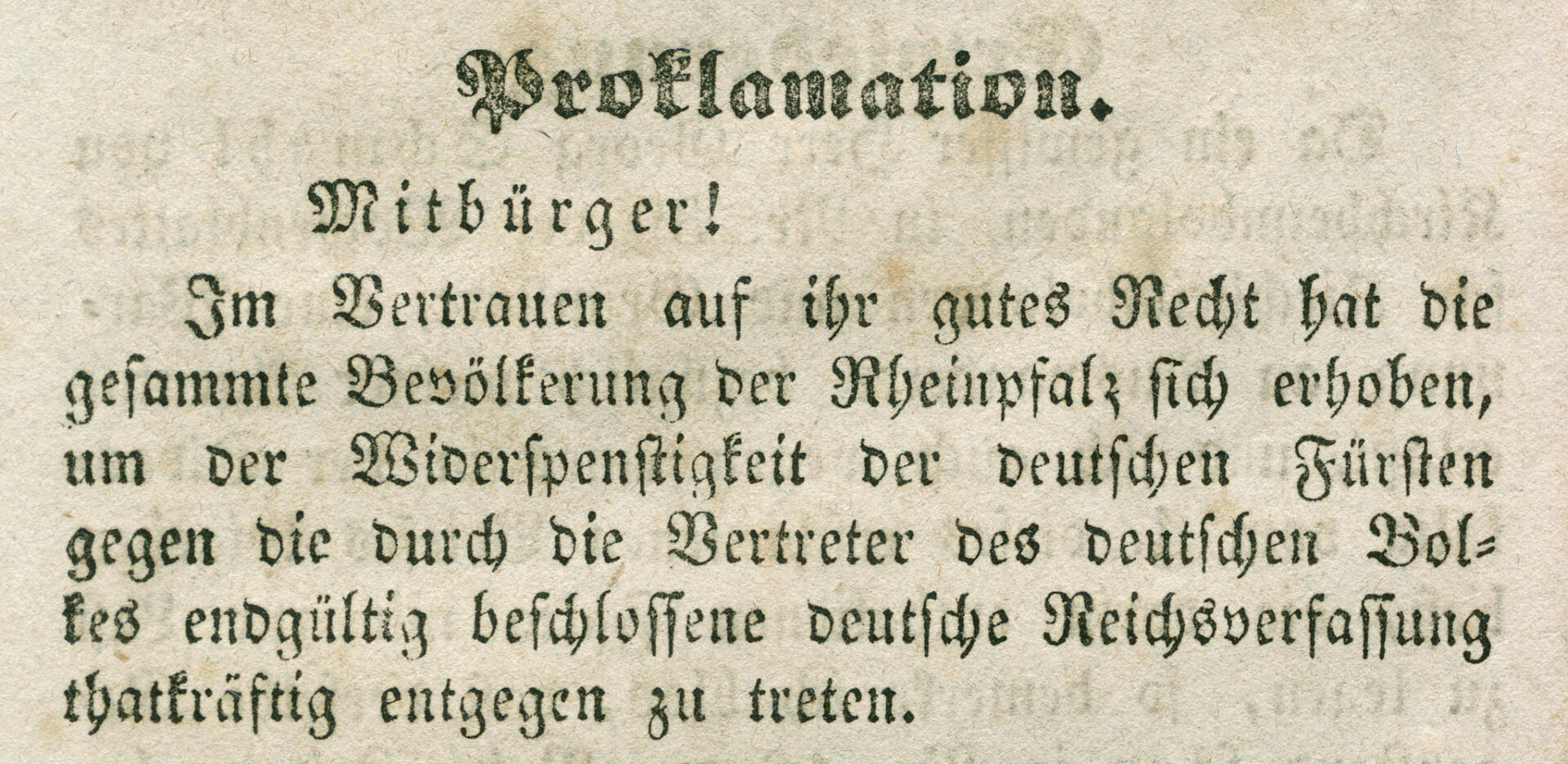
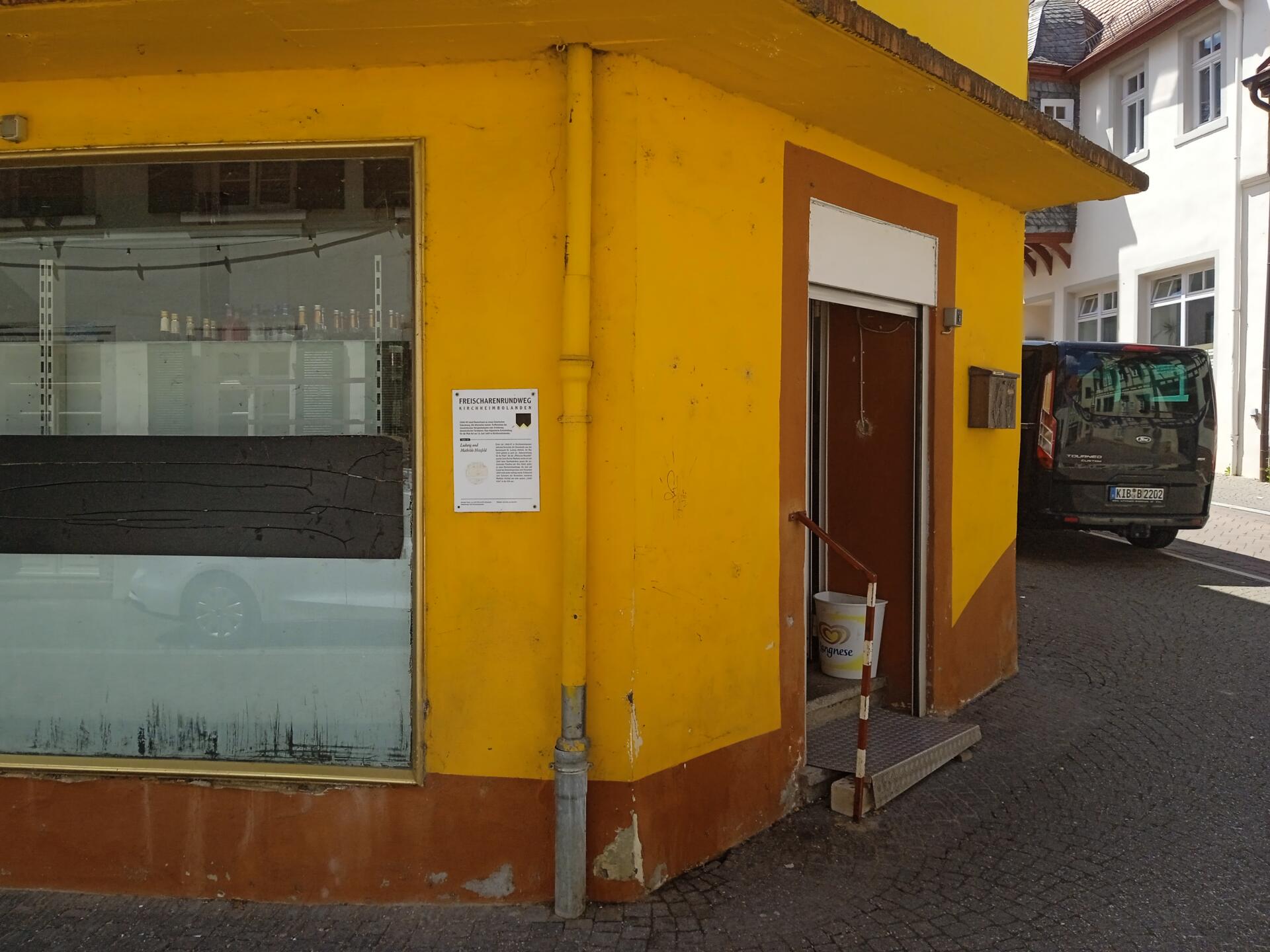
The “well-known free soldier Demoiselle Hitzfeld”
The scene is heroic. Raising a black, red and gold flag high, a young woman stands on a barricade, like a doorstep. Is it really the Kirchheimbolander born in 1826, who was described in the “Pfälzer Zeitung” in 1853 as the well-known free fighter Demoiselle Hitzfeld?
The local tradition still cherishes this image today: in pictorial representations on the square at the Grey Tower [Standort 54] and in the meeting room of the district administration, with the naming of a Kirchheimboland school and a street.
Mathilde Hitzfeld (1826-1905), the daughter of the Kirchheimboland cantonal doctor and politically active Dr. Ludwig Hitzfeld in 1848/49, was accused in the post-revolutionary wave of trials of inciting people to fight against the Prussian troops. She is also said to have broken open the cellar door of the wine merchant Levi here, or at least to have helped to do so.
The obituary of Mathilde Hitzfeld, who died in the USA, in the Kirchheimbolanden “Lokalanzeiger” in 1905 emphasizes something similar: “She took part in the barricade battle in Kirchheimbolanden [teil] and tried in vain to stop the advance of the Prussians with a small band of daring freedom fighters.
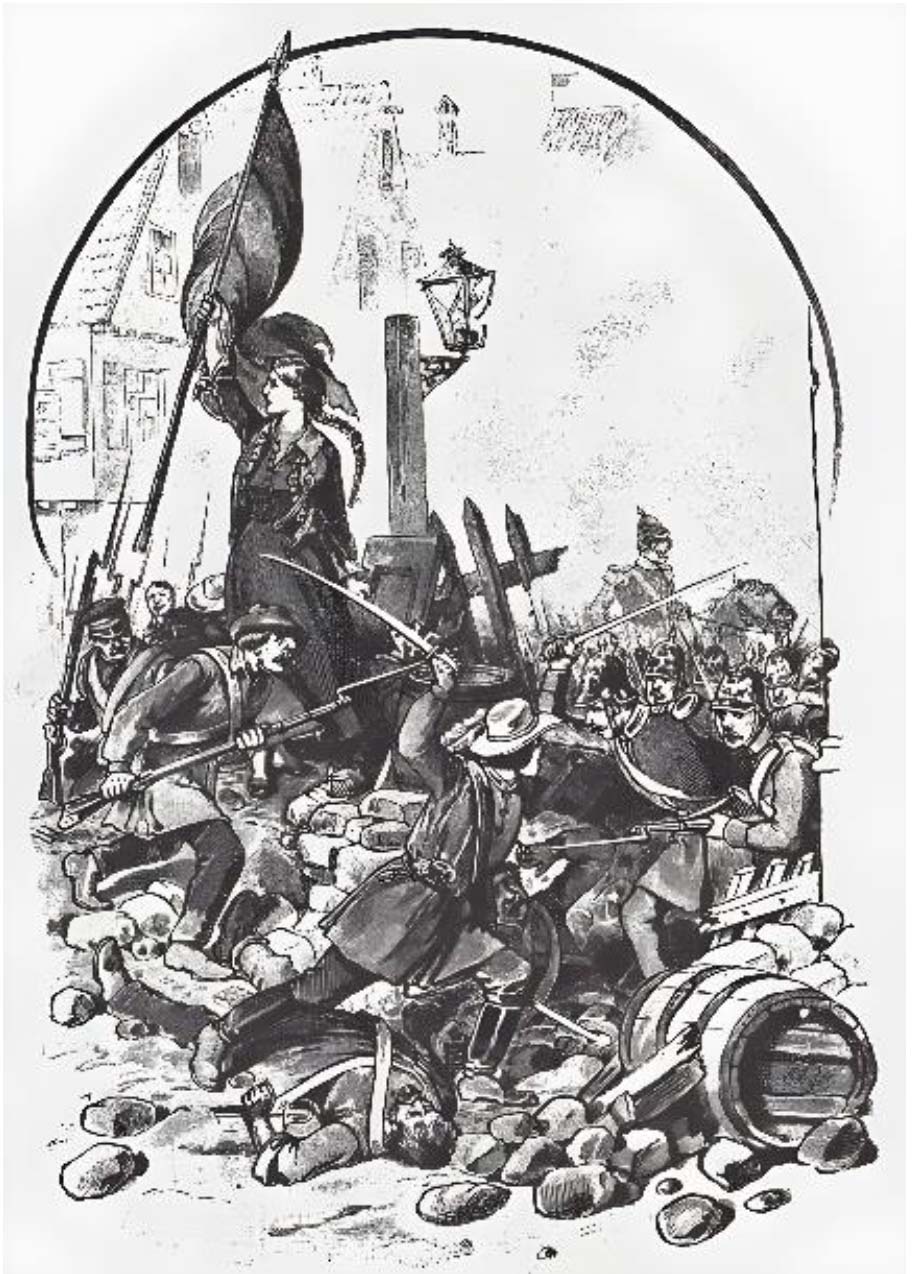
So Mathilde Hitzfeld is an icon of the revolution?
However, although she was accused of participating in the highly treasonous activities in the Palatinate district in May and June of this year [des Jahres 1849], she was acquitted by the end of the year on the basis of King Maximilian II’s amnesty law.
But the myth lives on. Above all, the image of her holding the flag gives it wings.
Eugène Delacroix’s famous painting “Liberty Leading the People” comes to mind.
The picture of the Kirchheimbolander barricade is also very much in this line, as is the depiction of Lisette Hatzfeld on the Mannheim roadblock. Both illustrations were published at the end of the 19th century.
Mathilde Hitzfeld’s connection to the black, red and gold flag also goes back to a very specific root: the flag dedication of the “Donnersberger Freischaren 1848”. The report on this in the “Kirchheimbolander Wochenblatt” is full of pathos: “She took the flag, presented it to the standard bearer of the Freischar in a flaming speech […] and said at the end: “If you return with this flag and with a united and free fatherland, I offer you this hand.”
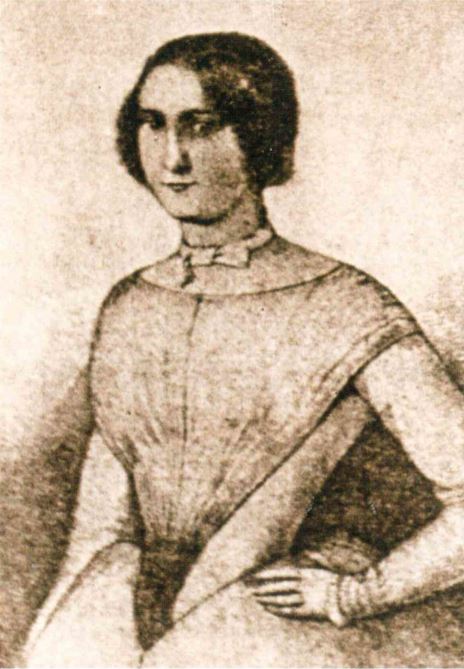
Memorial Foundation
Mathilde Hitzfeld is remembered in a very special way in relation to 1848/49. Not only are a street and a school in Kirchheimbolander named after her, she is also represented by the mural in the parking lot at the Grauer Turm [Standort 54] and in the museum in the Stadtpalais.
Her lifelong connection with Kirchheimbolanden contributed to this. In 1899, she was therefore also invited to the 50th anniversary celebration of the Schlossgartengefecht. Now 73 years old, however, she was unable to travel from the USA. She therefore apologized in a long letter: “Believe me, I have not forgotten that time, I have not changed myself or my views. The same enthusiasm for justice and freedom still glows as vividly in me today as it did 50 years ago.
Her husband Theodor Kaufmann also saw himself in this light. He had crossed paths with Richard Wagner and Gottfried Semper in Dresden during the May Uprising of 1849. He knew Wagner from the Dresden People’s Association and Semper from “Barricade No. 13” during the May Uprising. According to one of the insurgents in a later police report, the barricade had various commanders. First Prof. Semper commanded it […], then a certain Kaufmann. On June 24, Kaufmann was therefore summoned to appear before the police, which he evaded by fleeing to Switzerland and emigrating to the USA.
It is therefore not unlikely that he is actually the artist of the design for a woodcut that appeared in 1850 in a Düsseldorf publishing house, which published a Kaufmann engraving cycle on the “Idea of God” in the same year.
Entitled Begnadet zu Pulver und Blei 1849, the woodcut depicts the death of an executed irregular while the troops of the state continue their march.
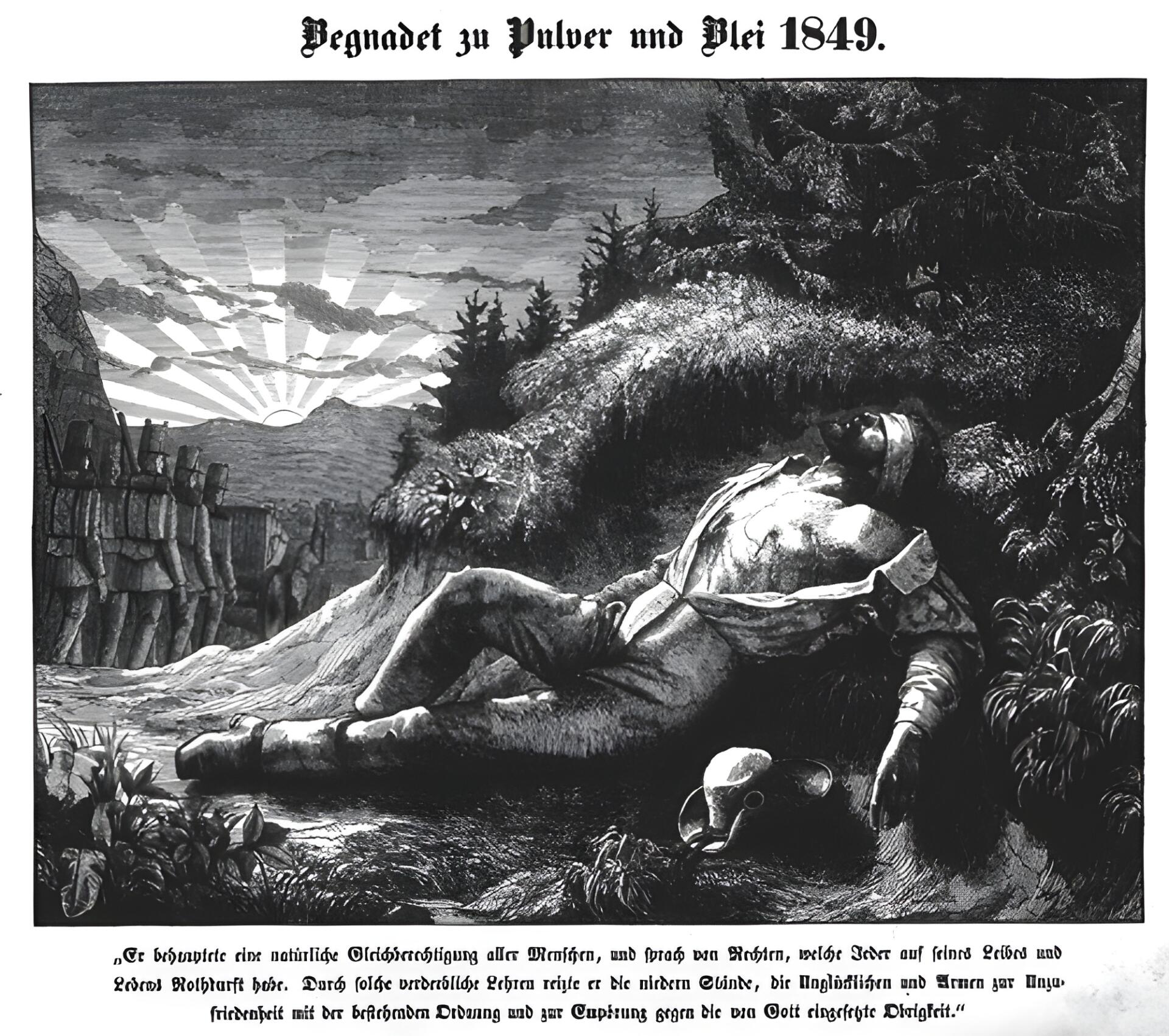
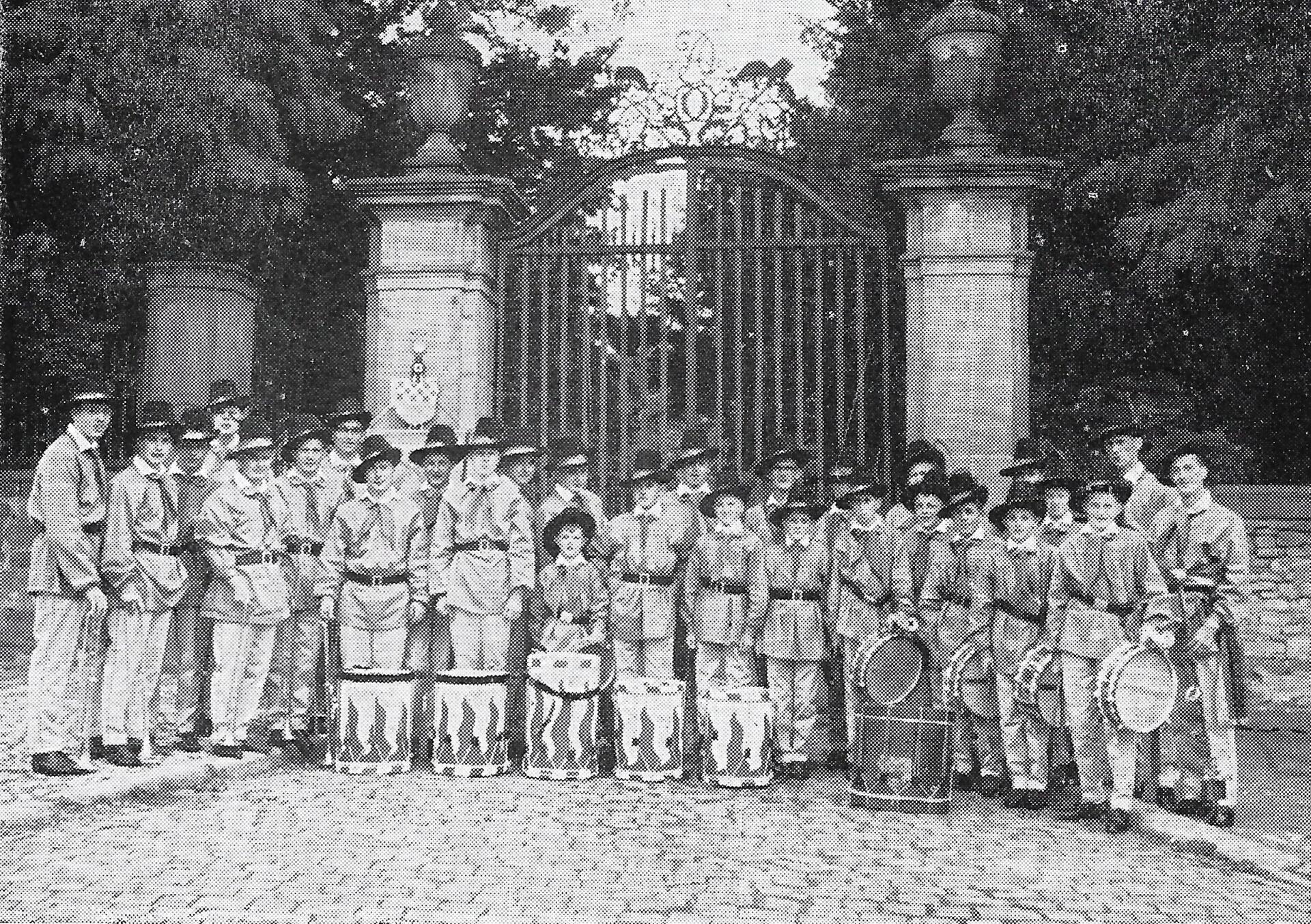

For the woodcut is placed in a context: Consolation for 1849ers, the title of the four-panel series with Socrates, Jesus and Huss [Jan Hus] as a link in the chain of blood witnesses to the development of the human race.
This gives the Remembrance Foundation its topos.
If the painting has therefore actually implemented a Kaufmann design, it illustrates a political way of thinking entirely in the spirit of Mathilde Hitzfeld.
So how can Mathilde Hitzfeld and 1848/49 be portrayed today? The mural in the parking lot at the Grauer Turm raises this question, as does her personification in the museum in the Stadtpalais.
The museum also commemorates the marching band “donated” by the Kirchheimbolanden gymnastics club in 1961 and the accompanying traditional costume group – both in Freischaren uniforms and including Mathilde Hitzfeld.
However, this historicization is only museum-like, as it no longer exists.
At the same time, however, this demonstrates the changes to which the view of 1848/49 is subject. But it also illustrates a basic characteristic of historical memory in general: it is subject to the zeitgeist. And this is known to be fluid.
“Isn’t freedom for everyone?”
The contemporary witness at the center of Friedrich Albrecht Karcher’s 1851 “Novelle aus dem Jahr 1849”, published in Kaiserslautern under the book title “Die Freischärlerin”, is fictitious, but sets the scene for the revolutionary events in the Palatinate extremely well. For example, the protagonist asks: Is the man only fighting for himself? Isn’t freedom for everyone? Don’t we women also have a heart that beats for the fatherland? Wretched bonds of convenience that bind us women!
Mathilde Hitzfeld could have put it like this or something similar. However, women like her or Flora, the “Freischärlerin” in Karcher’s “Novelle”, were the exception – even in Kirchheimbolanden. But the two Hitzfelds, Mathilde and her mother Anna Maria, Regine Glaser and Therese Giessen, they and others were also committed to the revolutionary cause of the men – first and foremost, however, by embroidering and tailoring the vigilante and Freischaren flags.
Because “not only was equal participation of women in politics rejected by most men in 1848/49, but the majority of women did not even aspire to it.” And yet: women not only made flags, they also made public appearances at flag dedications, read newspapers and engaged in discussions.
This inevitably led to the question: “Isn’t freedom for everyone?”
“Good friends”
The liberal middle classes of the 1830s/40s in Kirchheimbolanden were not only connected by their shared political and social thinking, but were also often linked by family ties. The Glaser and Giessen families, as well as Pilgeram and Brogino, are not isolated cases.
The entries relating to the Hitzfeld family recorded in the church register of the Protestant parish show the same. On the occasion of Ludwig Anna Maria Hitzfeld’s wedding in 1821, “Jakob Anton Brogino, merchant and good friend” and the court messenger Andreas Joseph Ropiquet, also a “good friend”, are noted as witnesses. Both witnesses are also included in a list compiled by the Kirchheimboland justice of the peace in 1832 of the “society of party men [genannt] who cherish [lieberale] political sentiments and principles”.
Equally revealing is the series of witnesses to Mathilde Hitzfeld’s baptism (1826). It names another “liberal partheymann” from 1832, “Friedrich Lenning, merchant” and brother-in-law of Jakob Anton Brogino. And for the baptism of Mathilde’s sister Magdalena Ina (1724), “Jakob Knöbel, schoolteacher” is listed, father of Friedrich Wilhelm Knöbel, who was accused in 1832 of being a “traitor” and of “denigrating the highest state authorities”.
In the 1830/40s, it was not only in the Palatinate-Bavarian country town of Kirchheimbolanden that such networks shaped the liberal bourgeois world.